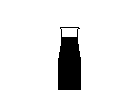 milchlos.de
milchlos.de

 milchlos.de
milchlos.de

In der Pubertät - und auch darüber hinaus - kann Akne häufig allein durch das Weglassen von Milch und Milchprodukten innerhalb kurzer Zeit zum Verschwinden gebracht werden.
Der direkte Zusammenhang zwischen Milch und Akne wird in einer Studie der Harvard-Universität erläutert. Dabei ist der Hinweis auf Hormone und bioaktive Substanzen in der Milch besonders interessant:
J Am Acad Dermatol. 2005 Feb;52(2):207-14.
High school dietary dairy intake and teenage acne.
Adebamowo CA, Spiegelman D, Danby FW, Frazier AL, Willett WC, Holmes MD.
Department of Nutrition, Harvard School of Public Health, Boston, Massachusetts 02115, USA. clement.adebamowo@channing.harvard.edu
BACKGROUND: Previous studies suggest possible associations between Western diet and acne. We examined data from the Nurses Health Study II to retrospectively evaluate whether intakes of dairy foods during high school were associated with physician-diagnosed severe teenage acne.
METHODS: We studied 47,355 women who completed questionnaires on high school diet in 1998 and physician-diagnosed severe teenage acne in 1989. We estimated the prevalence ratios and 95% confidence intervals of acne history across categories of intakes.
RESULTS: After accounting for age, age at menarche, body mass index, and energy intake, the multivariate prevalence ratio (95% confidence intervals; P value for test of trend) of acne, comparing extreme categories of intake, were: 1.22 (1.03, 1.44; .002) for total milk; 1.12 (1.00, 1.25; .56) for whole milk; 1.16 (1.01, 1.34;.25) for low-fat milk; and 1.44 (1.21, 1.72; .003) for skim milk. Instant breakfast drink, sherbet, cottage cheese, and cream cheese were also positively associated with acne.
CONCLUSION: We found a positive association with acne for intake of total milk and skim milk. We hypothesize that the association with milk may be because of the presence of hormones and bioactive molecules in milk.
PMID: 15692464
Neurodermitis im Kindesalter, kann die verschiedensten Ursachen haben. Eine häufige Ursache sind allergische Reaktionen auf Milch.
Mittlerweile kennen viele Eltern den Zusammenhang zwischen Kuhmilch und Hautausschlägen im Kleinkindalter schon. Wenn sie bei den ersten Anzeichen hartnäckiger Hautprobleme ihrer Säuglinge auf Kuhmilchfütterung verzichten, tritt in vielen Fällen eine Besserung ein oder die Symptome verschwinden völlig.
Ann Allergy Asthma Immunol 2002 Dec;89(6 Suppl 1):52-5
Natural course of cow's milk allergy in childhood atopic eczema/dermatitis syndrome.
Oranje AP, Wolkerstorfer A, de Waard-van der Spek FB.
Erasmus MC, Rotterdam, The Netherlands. aoranje@inter.nl.net
OBJECTIVE: This review was undertaken to determine the role of adverse reactions to bovine proteins in atopic dermatitis, recently called atopic eczema/dermatitis syndrome (AEDS).
DATA SOURCES: A PubMed literature search was conducted with use of the following phrases: atopic dermatitis and food allergy, atopic dermatitis and cow's milk, and cow's milk and eczema.
STUDY SELECTION: The authors' judgment and personal interest guided the literature selection.
RESULTS: Food allergy has a role in at least 20% of the cases of AEDS in children younger than 4 years. Cow's milk is usually the first food given to an infant, and cow's milk hypersensitivity is often the first symptom of an atopic condition. Adverse reactions to cow's milk proteins are usually categorized as immunoglobulin (Ig)E-mediated or non-IgE-mediated cow's milk allergy and nonallergic hypersensitivity (intolerance); the symptoms do not allow differentiation of these entities. In patients with cow's milk allergy and AEDS, resolution occurs in 90% by the age of 4 years. Non-IgE-mediated cow's milk allergy often disappears before the age of 1 year. Associated reactions to other foods develop in approximately 45% of patients. Allergy to potential environmental inhalant allergens has been reported in up to 28% of patients by 3 years of age and up to 80% before puberty. After consumption of large amounts of cow's milk, 45% of 10-year-old children who had become tolerant of cow's milk, but also 15% of control subjects, still had gastrointestinal complaints. The presence of cow's milk allergy during infancy increases the risks for development of other food allergies, respiratory atopy, and persistence of AEDS.
CONCLUSION: Adverse reactions to bovine proteins have an important role in AEDS.
PMID: 12487205
Bei schweren Hautproblemen lohnt es sich immer zunächst eine Milchexklusionsernährung für wenigstens 4 Wochen durchzuführen. Häufig, jedoch nicht immer, tritt eine Besserung ein.
Wenn Milchprodukte offensichtlich nicht die Auslöser sind, dann lohnt es sich an andere, häufig unverträgliche Nahrungsmittel wie z.B. Getreide zu denken und/oder an allergische Reaktionen auf weitere Lebensmittel, z.B. Eier, Gemüse, Obst. Neben der Standardbehandlung sollten die verdächtigen Nahrungsmittel ausgetestet und die Reaktionen beobachtet werden. Meist führt dieses Vorgehen zum Erfolg und durch Weglassen der allergenen Nahrungsmittel können dem Kind weitere Beschwerden erspart werden.
Curr Opin Allergy Clin Immunol. 2004 Oct;4(5):379-85.
Role of food allergy in atopic dermatitis.
Werfel T, Breuer K.
Hannover Medical University, Hannover, Germany. Werfel.Thomas@mh-hannover.de
PURPOSE OF REVIEW: Food allergy and atopic dermatitis often occur in the same patient. Based on clinical data from the past few decades, it is clear that foods such as cow's milk and hen's eggs can directly provoke flares of atopic dermatitis particularly in sensitized infants, whereas inhaled allergens and pollen-related foods are of greater importance in older children, adolescents and adults. Because the role and immunology of food allergy in atopic dermatitis remain controversial, here we review data that mainly focus on skin eczema and food allergy.
RECENT FINDINGS: Clinical studies have revealed that more than 50% of all children with atopic dermatitis that can be exacerbated by certain foods will react with a worsening of skin eczema alone or in addition to immediate symptoms. Adolescents and adults also react to foods, but reactions to 'classical' food allergens such as hen's eggs and cow's milk are not as common as in childhood. Subgroups of children and of adults with atopic dermatitis do, however, react to pollen-associated foods. Both immunoglobulin E associated and independent T-cell mediated responses appear to be involved in clinical eczematous reactions.
SUMMARY: Food-induced eczema should be diagnosed only by a thorough diagnostic procedure, taking into account the patient's history, the degree of sensitization and the clinical relevance of the sensitization. More clinical and immunological studies are needed to unravel the pathophysiology and the different rates of clinical responsiveness to different foodstuffs in patients with atopic dermatitis.
PMID: 15349037
Und hier der Bericht einer Betroffenen zu erreichen unter www.nie-mehr-neurodermitis.de.
Letzte Änderung am 04.12.2011